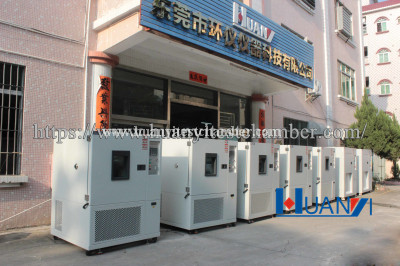What are the factors that affect the test results of the constant temperature and humidity test chamber?
Constant temperature and humidity test chamber, also known as constant temperature and humidity test machine, constant temperature and humidity test chamber, etc., is mainly used to test the performance of materials in various environments, and test the heat resistance, cold resistance, dry resistance and humidity resistance of various materials. It is suitable for quality inspection of electronics, electrical appliances, mobile phones, communications, instruments and other products. What factors will affect the test results of the constant temperature and humidity test chamber?

First, sensors and instruments. The relative humidity can be measured with a solid sensor that is not affected by condensed water, a fast-reacting wet and dry bulb sensor, or a dew point meter. Sensors that are sensitive to condensed water, such as lithium oxide sensors, cannot be used. When testing the data acquisition system, the test system should have an appropriate recording device. Usually the data acquisition system is separated from the test chamber controller. When using scale recording paper, the accuracy should be ±0.6°C. If a wet ball is used for control, the wet ball and container should be kept clean before each test, and the wet ball gauze should be replaced every 30 days. The wet ball net used in the constant temperature and humidity test chamber should be as thin as possible to facilitate the evaporation of water and keep the surface of the sensor moist. The water used in the wet bulb system should have the same quality as the wet bulb. If possible, during the test, the water tank, wet bulb yarn, sensor and other components of the relative humidity measurement system should be visually inspected every 24 hours to ensure the expected function.

Second, the wind speed passing the wet ball sensor should not be less than 4.6m/s, and the wet ball gauze should be placed on the suction end of the fan to avoid being affected by the heat of the fan. The air around any part of the sample should be kept between 0.5-1.7m/s.
Third, the humidification method. Spray steam or water in the air around the sample. The amount of humidification of the water should meet the requirements of PH6.5-7.2, and the resistivity is 1500-2500Ω·m at 25°C. Regularly check the water quality (no more than 15 days) to ensure that the water quality is qualified. Adjust the water temperature before spraying, and spray water after humidification to avoid destroying the test conditions. Do not spray water directly into the laboratory. The condensed water produced during the experiment should be discharged from the constant temperature and humidity chamber.

Fourth, prevent pollution. Except for water, no other substances can directly come into contact with the sample to prevent the sample from deteriorating or affecting the test results, and no substances such as rust or corrosive contaminants can enter the laboratory. In the laboratory, the method of dehumidifying, humidifying, heating and cooling samples must not change the composition of air, water or water vapor.









